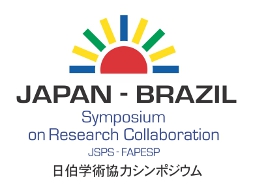FAPESP delegation visits Japanese institutions
Foundation directors meet with directors of the JSPS, JST, Riken, Miraikan, Rikkyo University and the University of Tokyo to expand scientific exchange between researchers from the two countries
By Carlos Eduardo Lins da Silva, in Tokyo
Agência FAPESP – A FAPESP delegation led by its president, Celso Lafer, held a series of meetings with Japanese research entities and institutions of higher learning during the week of March 11, in order to conduct negotiations with a view towards future cooperation agreements.
The meetings were held in Tokyo on the eve of the Japan-Brazil Science Symposium, jointly organized by FAPESP and the Japan Society for the Promotion of Science (JSPS) at Rikkyo University, supported by the Embassy of Brazil in Tokyo.
The most important of these meetings was held the JSPS. Lafer and the CEO of the FAPESP Executive Board, José Arana Varela, were received by JSPS President Yuichiro Anzai. The Ambassador of Brazil in Tokyo, Marcos Galvão, also took part in the meeting.
Anzai and Lafer welcomed the occasion of the symposium as an initial step in the direction of new understandings between the two entities with a view towards possible research projects to be jointly developed by São Paulo and Japanese researchers.
In December 2012, the Assistant Coordinator of International Relations of JSPS, Saito Kiyoshi, who was also in attendance at the Tokyo meeting, went to São Paulo to visit FAPESP and begin to explore options for future cooperation.
The JSPS receives close to 100,000 research funding requests each year and considers approximately 30% of them. Its annual operating budget is close to $3.7 billion. It currently has agreements with 85 educational and research institutions in 45 countries. Brazil has just a small share in the entity’s international relations.
The FAPESP delegation was also received at the Japan Science and Technology Agency (JST), Japan’s second largest promoter of research, by its president, Michiharu Nakamura and other directors. With an annual operating budget of nearly $1.2 billion, the JST focuses mainly on innovative research that can be used immediately.
At the two institutions, several points of mutual priority interests with FAPESP arose in terms of lines of research, especially those related to bioenergy, environmental studies (particularly biodiversity and climate change), nanotechnology and materials.
The FAPESP directors also met with their colleagues at Riken, one of the principal Japanese research institutes, with centers in several cities throughout the country, and emphasis on programs in biomass engineering, computational sciences, preventive medicine, brain studies, and quantitative biology, among other things. Riken employs nearly 3,500 researchers.
During the same week that the FAPESP delegation met with Riken president, Akihiro Fujita, emissaries from the institute visited FAPESP to study the perspectives for future scientific cooperation agreements in their fields of special interest as well as other fields.
Universities
At the University of Tokyo, Celso Lafer and José Arana Varela met with President Jinichi Hamada, who told them about the forum the Japanese institution will hold São Paulo, November 11-13, 2013.
The main topics of the forum that is expected to take nearly 20 professors from the University of Tokyo to São Paulo, and which FAPESP will team up on, will be: sustainability, thermofluid engineering, ocean utilization and how Brazil and Japan might collaborate on research of these and other topics.
The University of Tokyo, founded in 1877, is the oldest in Japan as well as one of the most recognized throughout the world for its high quality teaching and research, frequently appearing among the ten best in principal rankings of university excellence. Eight Nobel laureates have come from among its faculty. With 30 thousand undergraduate and graduate students, its annual budget is nearly $2.5 billion.
At the University of Tokyo as well as at Riken, Lafer and Varela visited several laboratories in order to see the equipment and meet the researchers who work with it.
Another Japanese university visited by the FAPESP delegation was Rikkyo University, site of the symposium. A private university with emphasis on social sciences and the arts, Rikkyo is also known as the University of São Paulo, because its 19th century Episcopalian founders chose Paul as its patron saint and source of inspiration. The president of Rikkyo University, Jun Itoygawa, mentioned this coincidence upon the arrival of Lafer and Varela.
FAPESP directors also visited the National Museum of Emerging Science and Innovation, known as Miraikan (Japanese for future), where the executive director, the first Japanese astronaut, Mamoru Mohri, explained how the project is part of Japan’s domestic policy of science dissemination for the purpose of providing accountability to society for the public funds used in the field and for stimulating an interest in science among children and young people.
In evaluating the mission, FAPESP President Celso Lafer said, “The trip was extremely productive. It has opened up new horizons and served as an opportunity to show our Japanese colleagues the potential synergies for cooperation between research support institutions and research in the two countries.”







